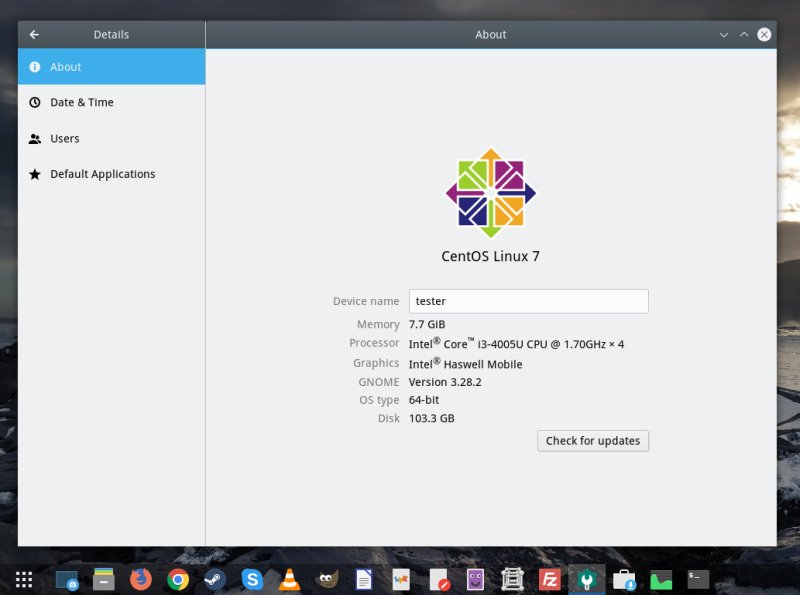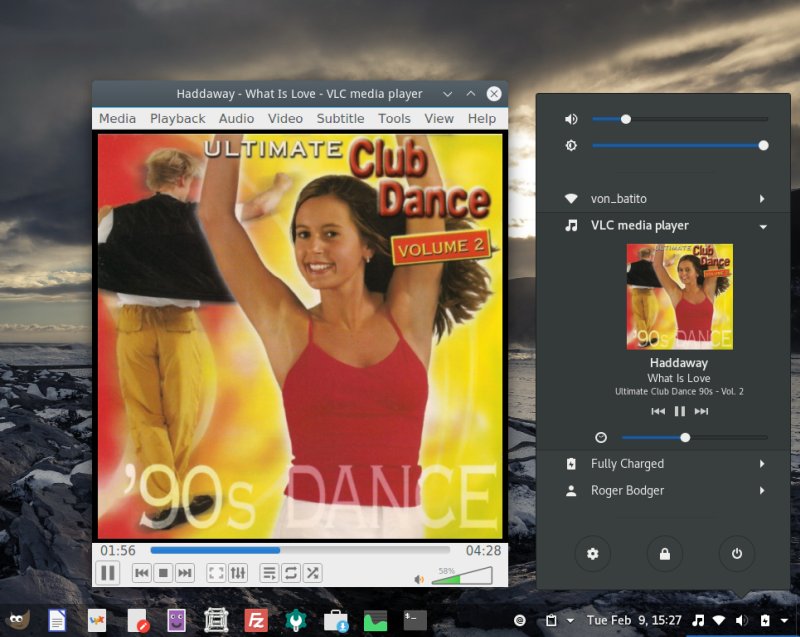Updated: March 5, 2021
I have to admit I was sad to read about the upcoming and early demise of CentOS 8. As soon as I saw the announcement, I remembered the two instances of CentOS installed on my test laptop, 7 and 8, sitting side by side in a lovely, complex eight-boot setup. Both are heavily tweaked systems, used in the desktop fashion, offering stability and fun in the home environment that were never intended from this server distro. And as it turns out, CentOS 7 will outlive the newer version by a long mile, or furlong if you will.
So I thought, well, how relevant can CentOS 7 be in the coming years? After all, it's a good few years behind CentOS 8 software wise. And here, I want to take a purely home use approach. I do not want to discuss or debate the actual announcement or the impact this has on the wider IT industry. I want to see if CentOS 7 is still a viable choice for desktop use, should you decide to put it on your PC or laptop. After me.

FrankenOS
All right, so what do we have here? I like CentOS a great deal, and over the years, I tried to make into a perfect desktop. I did this lovely little experiment with all the recent versions, so you should check me pimping articles for CentOS 6, CentOS 7 and CentOS 8. In all of these cases, I added extra stuff, repos and software, and made the boring server distro into a useful home system, bolstered with the promise of great stability and ten years of support.
Specifically, with my CentOS 7, it runs several third-party repos. It has tons of non-default software. And just to see whether I could do it, I even added a separate kernel repo, so the distro would benefit from latest improvements in hardware support and memory management, way beyond anything you would see in the standard lineup. But I'm getting too excited and rushing ahead a bit too much. You want context, you want a story!
The CentOS 7 lay dormant for a good year plus, as I focused more on using CentOS 8. Come the announcement, I booted the older distro and let it update its entire software set. This took quite a while, resulting in more than 3,000 package updates via yum. The process completed after about two hours. Successfully.

On next system login, I had kernel 5.10 - this is newer than many a modern, up-to-date distro. The desktop is fortified with about a dozen extensions plus numerous other essential tweaks you need for a good, efficient Gnome desktop experience. In fact, the older Gnome version that CentOS 8 runs has a side perk and that's the availability of several extensions that no longer run on the more recent versions of the desktop environment. For instance, the music indicator, that's a lovely one. Of course, I'm also using the Dash to Panel, which gives me the classic layout. I'm also using the Breeze window decorations, and the fonts are pure black.

The software is up to date. The system has RPM Fusion, EPEL, ELRepo, it's configured to use Flatpak and snaps. I've got latest Firefox ESR, latest Chrome and Skype, tons of other goodies, and it all purrs nicely. Very elegant. Of course, the third-party additions do break my strict model for what, in my lexicon, classifies a production-worthy Linux system, but they do open up a whole range of possibilities that are otherwise not possible with stock CentOS. In other words, I wouldn't use a distro with random links to third-party repos for serious stuff, but if this hurdle ever gets cleared, you have the formula for serious productivity fun right there!


But then, there's the philosophical question ... with a custom software set, custom kernel, customized desktop, is this CentOS 7 really a CentOS 7? It's got more in common with more recent Fedoras or Ubuntus than it does with itself. And yet, the label reads what it reads, so I guess it's still the original, just heavily modified almost beyond recognition.
Performance
Fast. This is the thing. CentOS 7 is sprightlier, more responsive than many newer, more modern distros, including those running later versions of Gnome, which introduce a whole bunch of performance improvements. Not sure how or why, but being able to grab a desktop code from two or three years back and then compare to something newer, you can see exactly the difference in performance. Quite often it seems, the software gets slower. The only notable and consistent exception to this rule nowadays seems to be Plasma.
Even so, I am surprised. I would expect the newer Fedoras to outperform this old CentOS on this box. Maybe I'm getting all sentimental and gushy and losing my objectivity, but this seems to be my impression. Perhaps it's the kernel doing the magic, so it's not just self-delusion. But then, this be another perk of my frankenification of CentOS 7. You get relevance and speed. Very nice, I like.
Conclusion
I am surprised not surprised by own experience. I knew CentOS is rock solid, and I didn't expect any complications, but the results surpass my own expectations. I guess I've been removed from the good ole stuff for too long to remember and appreciate the steadfast simplicity from the heyday of the desktop - roughly the first half of the past decade. And if I think more deeply about it, CentOS 7 actually has a wider collection of software available than its successor, as lots of the stuff, even in RPM Fusion and EPEL, didn't make it into CentOS 8. Like LyX. The one thing I'm missing here is Plasma 5, so maybe I will actually hassle myself up to get this working all nice and proper like, just for fun.
But there you have it, a coincidental mini-review of an old distro that keeps on giving. Good stuff, excellent functionality and stability, modern, up-to-date software of all sorts and kinds, a beautiful, elegant, fast desktop despite its inherent shortcomings, and still some four years left on the clock. Makes me feel a bit less sad about CentOS 8. Just a little.
Cheers.